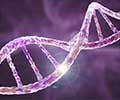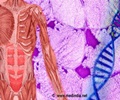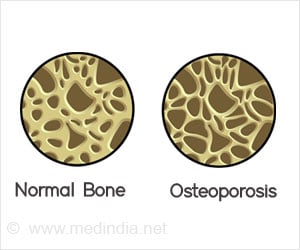Two research teams have created a three-dimensional map that gives a better understanding of how the architecture of the rod sensory cilium is changed by genetic mutation.

"The major significance of this report lies in our being able to, for the first time, look in three dimensions at the structural alterations in ciliopathies," said Dr. Theodore G. Wensel , chair of biochemistry and molecular biology at BCM and corresponding author of the report that appears in the journal Cell. The report is spotlighted on the issue's cover.
In collaboration with the National Center for Macromolecular Imaging, led by Dr. Wah Chiu, professor of biochemistry and molecular biology at BCM, Wensel and his colleagues established such three dimensional images for cilia in three examples of mice known to have cilopathies.
These mice have genetic mutations that lead to defects in the structure of the rod outer segment. The rod outer segment is part of the photoreceptor in the retina called a rod. The rod outer segment contains photosensitive disk membranes that carry rhodopsin, the biological pigment in photoreceptor cells of the retina responsible for the first events that result in the perception of light.
Using cryo-electron tomography, the scientists compared the structures of the rod outer segment in the mutant mice to those in normal mice.
"This is one of the few places in the world where you could do this," said Wensel. The Center, run by Chiu, has powerful cryo-electron microscopes that make tomography possible. To achieve the three-dimensional reconstruction, Dr. Juan T. Chang in Chiu's Center froze the photoreceptors purified by then-graduate student Jared Gilliam in a special way that made it possible to perform electron microscopy. During the microscopy session, the frozen samples were carefully tilted allowing the researchers to take many two-dimensional images that were used in the computer reconstruction of the three-dimensional map.
Advertisement
"There is a huge flux of material from the inner segment to the outer segment of the photoreceptor," said Wensel. "When there is a defect, then the animal or patient goes blind."
Advertisement
"It looks as though these vesicles that are tethered contain material that will fuse to the plasma membrane and go up the membrane to the outer segment," said Wensel.
In studies of a mouse model of a disease called Bardet Biedl syndrome, developed by the laboratory of Dr. James Lupski professor of molecular and human genetics at BCM, Wensel and first author Gilliam saw something that was almost shocking – a huge accumulation of these vesicles. The Bardet Biedl genes contain the code for a BBsome that forms a membrane coat that makes transport possible through the connecting cilium to the outer coat.
"We would now surmise that the BBsome coat is required for fusion of the plasma membrane or transport up to the outer segment," said Wensel. "It gives us a whole new model for how this works. We need to do more now to nail it down."
"It suggests that aberrant trafficking of proteins is responsible for photoreceptor degeneration," said Gilliam, who is now a postdoctoral associate at The University of Texas Health Science Center at Houston.
Source-Eurekalert












